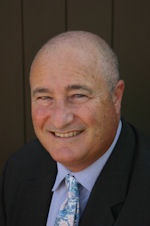
SUVs to subcompacts and then circle back to full size again. Wide ties, then narrow, then wide again. The tides come in and go out. In like manner, society cycles round and round from an emphasis on and worship of rugged individualism, to an emphasis on and lauding of community and cooperation. This is the "me-we" cycle.
Society is currently heavily affected by strong trends toward "we" think, from notions of shared sacrifice to paying your fair share to "giving back."
 |
| Healthcare business and legal affairs expert Mark F. Weiss. |
Physicians are told that the future of healthcare is not in rugged individualism but, rather, in the "it takes a village" world.
Certainly not everyone in a society buys into the current stage of this or any other me-we cycle, and that's why trends eventually moderate and return toward the antipode. However, there are some who, while holding a view closer to the other extreme, understand that they can benefit from co-opting the current zeitgeist.
Thus, there is the move by hospitals to take advantage of "we" think. Of course, while spouting "it takes a village," they are quick to maneuver into the role of the village's mayor, city council, and chief of police, all rolled up into one.
As the current wave of collectivism shapes trends in healthcare, hospitals seek to ride the wave to further their own "me" interests: Witness the completely hospital-centric notions of accountable care organizations (ACOs), so called "healthcare collaboration," and physician alignment.
Radiology groups that want to survive the crush of the me-we cycle's current collectivist perspective need to focus attention both internally and externally.
Internally, you must take steps to ensure that your group is cohesive. Hospitals often use dissension within a group as an excuse and a pathway to extend their tentacles of control. If there is no current dissension within a group, they often foster it. Consider the following example.
A somewhat disruptive member of a traditional, private practice model group pushes to become a partner, but the group is not particularly enamored of the prospect of "Dr. X" as a partner. There's some concern, as Dr. X has a history of snooping in the group's files. Dr. X is also adept at lobbying the referring physicians for purely his own benefit.
The hospital pushes for inclusiveness: Dr. X should be made a partner. After all, all of the group's physicians need to know that there's an ownership role for them. It's best for the whole hospital community. And, by the way, if Dr. X is not made a partner, the group can forget about a renewal of your exclusive contract. Dr. X is made a partner.
Subsequently, Dr. X continues the quest for personal aggrandizement and continues to disrupt the functioning of the group -- it becomes polarized around existing leadership on one side and Dr. X on the other. The hospital uses the dysfunction as a ruse to terminate the existing group and to bring in a new "national" group, using Dr. X as the bridge to facilitate the group's takeover.
Of course, the fate of Dr. X, both in terms of longevity of employment by the new group, and the amount of the likely judgment in favor of the old group, is yet to be determined.
Among other essential steps, bringing cohesion to your group involves governance, ownership, and management issues, and it also involves weaving legal protections throughout your group's agreements. These are not individual efforts; they require careful strategy and woven execution, far beyond the traditional notions of shareholder, partnership, employment, and subcontract agreements.
Externally, you must take steps to stop or hinder the hospital's efforts to gain advantage through "collaboration." Seek alliances with similarly situated groups. Explore ways of using the hospital's existing medical staff bylaws and political support within the medical staff to preserve physician control. Engage in a publicity push both within the medical staff and in the community at large.
To the extent that hospital efforts to "align" physicians are under way, use that process to argue for physician control of the resulting entities and arrangements. If your relationship with the hospital involves a contractual arrangement, build in restrictions and protective provisions, such as prohibitions on solicitation and fees for outplacement to the hospital.
Eventually, the me-we cycle will shift back the other way, but that may take decades.
If you'd like to wait it out, then you don't need to take action other than to learn the words "may I have my paycheck, please?"
Mark F. Weiss is an attorney who specializes in the business and legal issues affecting radiology and other physician groups. He holds an appointment as clinical assistant professor of anesthesiology at University of Southern California's Keck School of Medicine and practices with the Advisory Law Group, a firm with offices in Los Angeles and Santa Barbara, CA. He can be reached by email at [email protected] and by phone at 800-488-8014.
Copyright © 2011 Mark F. Weiss



















